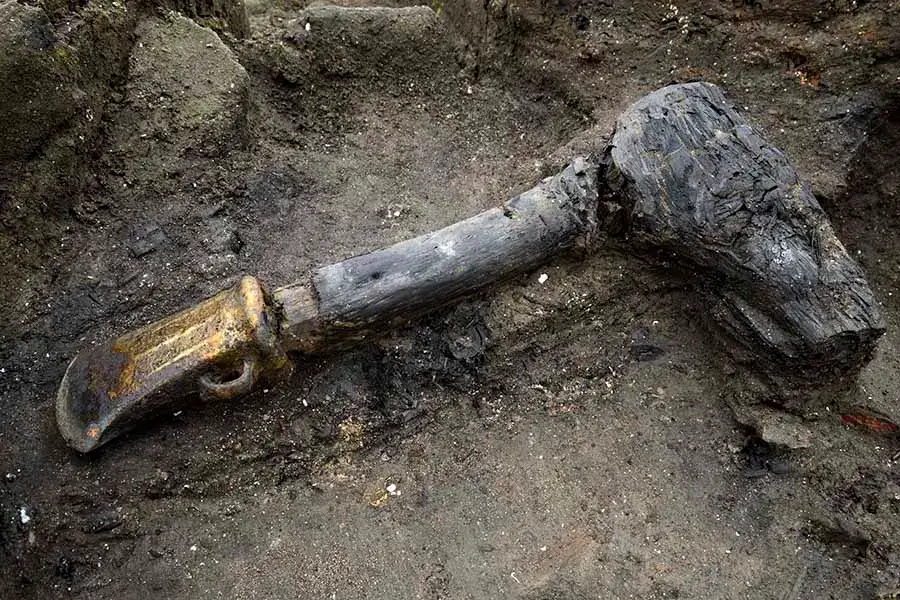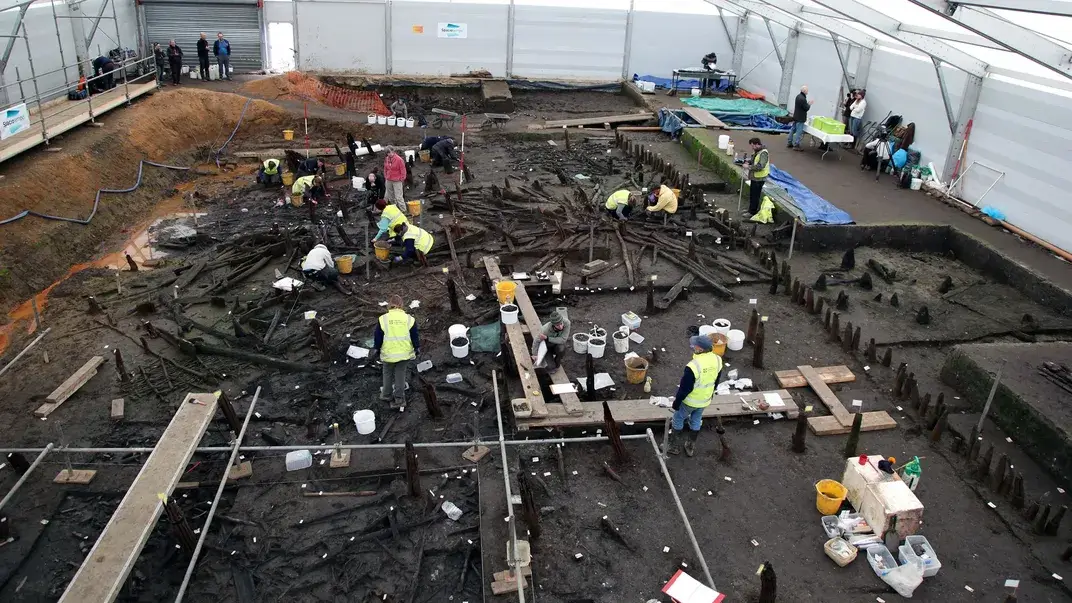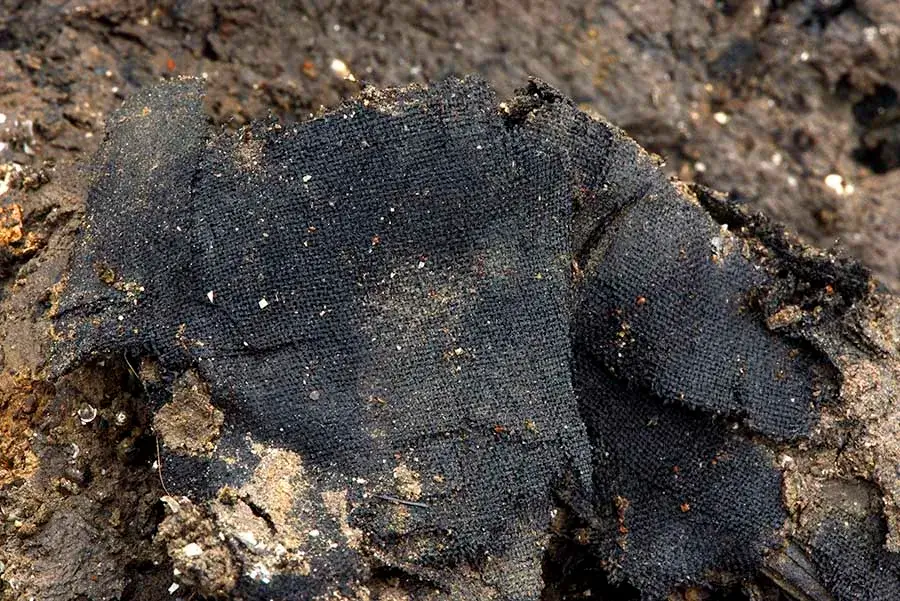
Incredibly Well-Preserved Bronze Age Village Reveals A Snapshot of Early British Life Before A Fire
Residents fled when flames burned through the Must Farm settlement, and now, archaeologists have unearthed its buildings and objects that were preserved in a riverbed
By: Will Sullivan | Smithsonian
Almost 3,000 years ago, a village in modern-day England caught on fire. As its inhabitants fled, their buildings burned and sunk into a riverbed, which would preserve their homes and belongings for millennia.
Now, archaeologists have excavated and analysed the site, gathering an unusually detailed look at how people lived during the Bronze Age in Europe. The findings have been published in a two-volume report published by the University of Cambridge’s McDonald Institute for Archaeological Research.
“The fire may have been disastrous for the inhabitants, but it is a blessing for archaeologists, a unique snapshot of life in the Bronze Age,” Mike Parker Pearson, an archaeologist at University College London who did not contribute to the findings, tells CNN’s Katie Hunt.
“This is the best evidence we have on understanding prehistoric diet and cooking practices,” Rachel Pope, an archaeologist at the University of Liverpool in England who was not involved in the research, says to New Scientist’s Chen Ly. “It’s the closest we’ll ever get to walking through the doorway of a roundhouse 3,000 years ago and seeing what life was like inside.”
Called the Must Farm settlement, the site is located near the modern-day English town of Whittlesey. Local archaeologist Martin Redding stumbled upon the site in 1999, when he recognized that wooden stumps sticking out from the bank of an old quarry bore a resemblance to other Bronze Age artefacts.

Excavations took place between 2004 and 2016, with the main work occurring between July 2015 and August 2016. Researchers discovered the site had been built in the mid-9th century B.C.E.—and during its Bronze Age prime, it would have been twice as big as what remains today. The rest of the site was destroyed by mining at the quarry in the 20th century, according to a statement from the University of Cambridge.
Most Recent UFO & Aliens Sightings Leaked By Bob Lazar
But from what they could unearth, archaeologists pieced together an intricate picture of Must Farm life—and the dramatic blaze that ended the settlement. All the residents likely escaped, but they must have left the area quickly, since the scientists found unfinished meals left behind in bowls, abandoned animals and other possessions.
One of Must Farm’s most exciting discoveries was Pot 44, a coarseware bowl containing a meal of a thick, “porridge-like” mixture of wheatmeal mixed with animal fats. The wooden spatula used to stir the contents was even found still resting against the inside of the bowl. pic.twitter.com/FRxw6zw998
— Cambridge Archaeological Unit (@CambridgeUnit) March 20, 2024
Researchers uncovered four wooden roundhouses and a square entranceway structure, which were supported by stilts above a river channel and enclosed by a curved fence. The roofs of the buildings were made from straw and topped by turf and clay.
“These people were confident and accomplished home-builders,” Mark Knight, a co-author of the report and a project officer at the University of Cambridge, says in the statement. “They had a design that worked beautifully for an increasingly drowned landscape.”
The team also identified a wide range of possessions, both intact and broken, including more than 180 fibre and textile items, such as yarns, cloth and knotted nets; 160 wooden artefacts, such as containers and furniture; 120 pottery vessels; 90 pieces of metalwork and at least 80 beads. While some objects were made locally, others had a more distant origin, such as glass beads from Iran and a bronze bucket, possibly from Ireland.

“In a typical Bronze Age site, if you’ve got a house, you’ve probably got maybe a dozen post holes in the ground, and they’re just dark shadows of where it once stood. If you’re really lucky, you’ll get a couple of shards of pottery, maybe a pit with a bunch of animal bones,” Chris Wakefield, a co-author of the report and an archaeologist at the University of York in England, tells CNN. “This was the complete opposite of that process. It was just incredible.”
One of the dwellings seemed to be divided into distinct areas for different activities—a kitchen in the northeast, a sleeping area in the northwest, tool storage on the east side and a space for textile work in the southeast. Lambs were kept indoors in the southwest part of the home, and each home had a toolbox with items including sickles, axes and razors. Remnants in bowls and jars suggested people ate honey-glazed venison and a wheat-grain porridge topped with meat juice.
The analysis indicated the village burned down within a year of its construction—it contained a relatively thin layer of waste sediment, and the timber used in the buildings showed few signs of wear.
As the fire scorched the area, all these materials sunk into the muddy river water below. The river’s silts, which lacked oxygen, preserved the materials in good condition. The researchers aren’t sure what started the fire, per CNN.
“Pretty much everything that had been there in time of the fire inside these people’s houses has been preserved to find nearly 3,000 years later,” Wakefield tells New Scientist.
* * *
NEXT UP!
Giant “Skeletons of Enormous Size” Discovered In New Mexico – New York Times Article From 1902
Researcher Graham Hancock coined the phrase, ‘we’re like a species with amnesia,’ and it’s true. Despite the fact that it seems the story of human history is well uncovered, every single year there are new discoveries made that challenge what we once held to be true. In some cases, there are discoveries which are concealed from the general public for various reasons, a great example of that would be the black budget world.
* * *
READ MORE: Ex-Pentagon Scientist, Vallée & FBI Report Suggest Interdimensional Beings Exist Among Us
Interesting! Satellite: Nephilim Giant Caught on Satellite Imagery of the Patagonian Mountains (Video)
Telegram: Stay connected and get the latest updates by following us on Telegram!
We’d love to hear from you! If you have a comment about this article or if you have a tip for a future Collective Spark Story please let us know below in the comment section.
